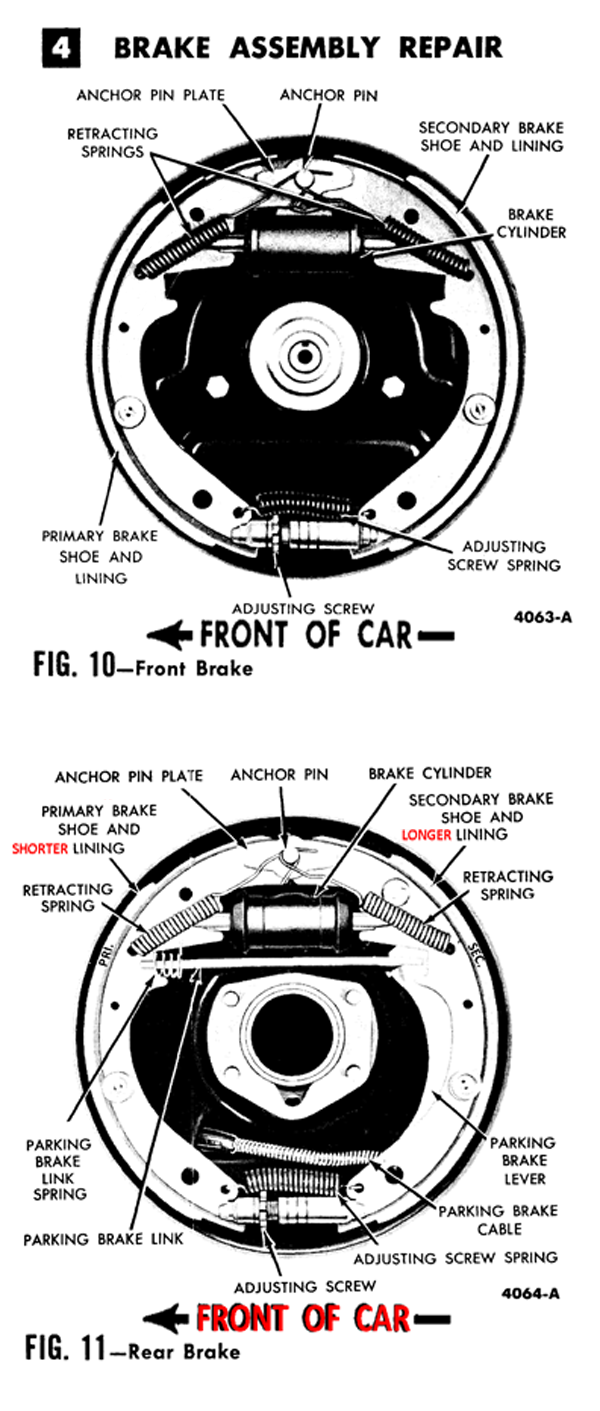My good neighbor across the street is having a new problem on his newly acquired '64 hardtop.
After he drives his car for short time, the right rear brakes start locking up. He has disconnected the parking brake system to eliminate that as possibly being a reason for the sticking. He's replaced the shoes, wheel cylinder, and bled what seems like a gallon of brake fluid through the rear brake system.
The shoes & rear wheel get so hot he's even had the right rear (old??) tire blow out!! He stated you couldn't even touch that wheel it gets so hot from the brakes sticking.
He had to replace the rear brakes shoes again since this started because on another weekend in which he & another neighbor torn into this problem the brake linings simply cracked & fell apart in pieces when they removed the drum. They had gotten that hot again and broken down!!
The axle tube bearing turns, sounds, and feels fine too. So that's not a problem.
He says the rest of the brakes seem fine. The front drum brakes don't pull you in a left/right direction. The brake pedal releases fine & the brake lights go out like they should.
The left rear wheel never locks up, so we didn't think it would be the rear flex hose either. I asked him to inspect the right rear steel brake tube from the flex hose junction block to the wheel cylinder. He said it looks fine & not pinched or dented in anywhere. And again, the right rear brake bleeds fluid fine??
My neighbor hasn't figured out how to post on here yet & asked me to start this thread, just to get some more ideals on what he could try to fix this T-Bird....

After he drives his car for short time, the right rear brakes start locking up. He has disconnected the parking brake system to eliminate that as possibly being a reason for the sticking. He's replaced the shoes, wheel cylinder, and bled what seems like a gallon of brake fluid through the rear brake system.
The shoes & rear wheel get so hot he's even had the right rear (old??) tire blow out!! He stated you couldn't even touch that wheel it gets so hot from the brakes sticking.
He had to replace the rear brakes shoes again since this started because on another weekend in which he & another neighbor torn into this problem the brake linings simply cracked & fell apart in pieces when they removed the drum. They had gotten that hot again and broken down!!
The axle tube bearing turns, sounds, and feels fine too. So that's not a problem.
He says the rest of the brakes seem fine. The front drum brakes don't pull you in a left/right direction. The brake pedal releases fine & the brake lights go out like they should.
The left rear wheel never locks up, so we didn't think it would be the rear flex hose either. I asked him to inspect the right rear steel brake tube from the flex hose junction block to the wheel cylinder. He said it looks fine & not pinched or dented in anywhere. And again, the right rear brake bleeds fluid fine??
My neighbor hasn't figured out how to post on here yet & asked me to start this thread, just to get some more ideals on what he could try to fix this T-Bird....








Comment